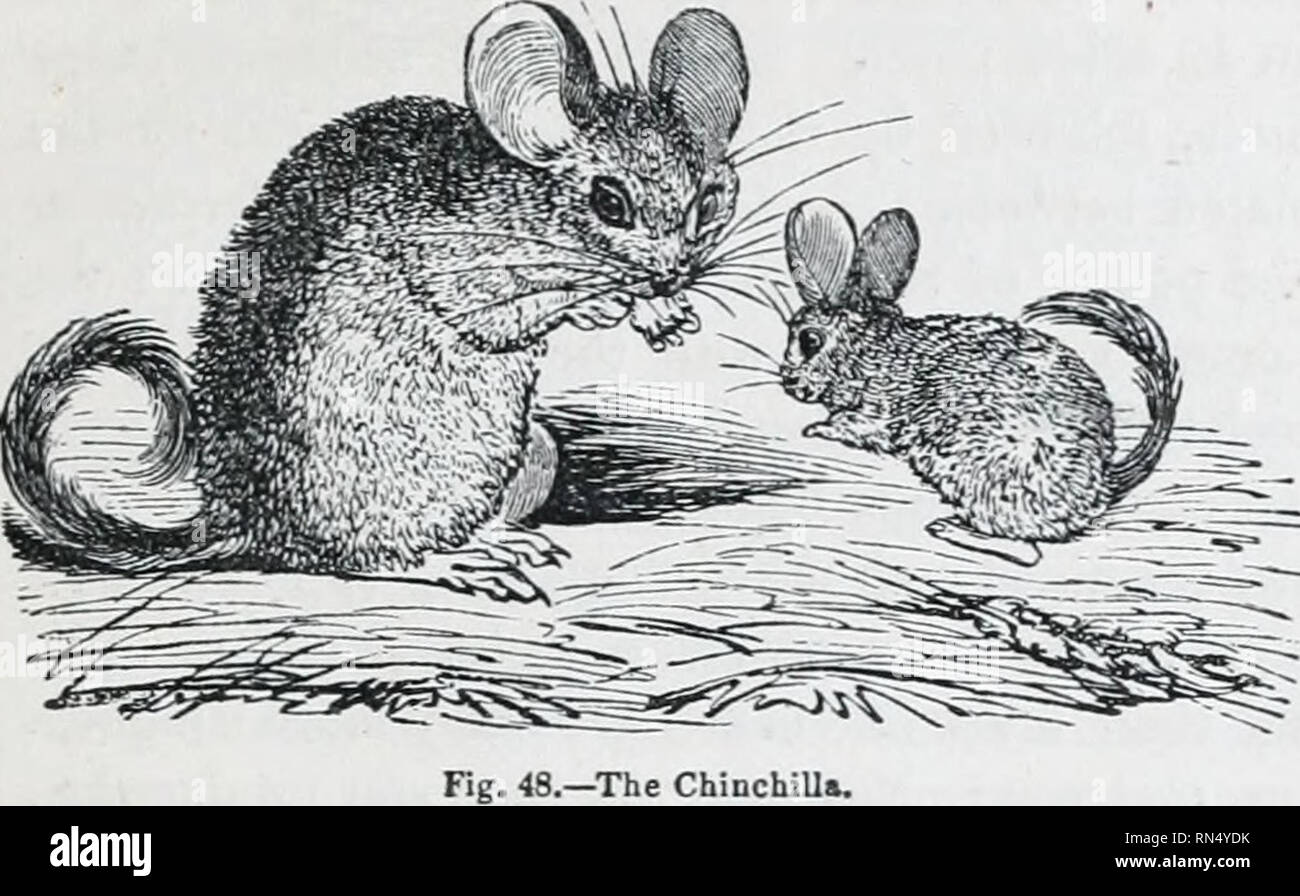. The animal kingdom : arranged after its organization; forming a natural history of animals, and an introduction to comparative anatomy. Zoology. Order 5. RODENTIA. 109. One species only is well determined, the Chin- chilla of the furriers (CA. lanigera, Ben.), cele- brated for the delicate fineness of its fur. It inhabits the Chilian and Peruvian Andes. Somewhat allied to the foregoing, is an- other small group of South American rodents, with also four rootless molars of equal size above and below, except in one instance ^= {Abrocoma),-v;heT& the inferior resemble those of an Arvicola; t

Image details
Contributor:
Library Book Collection / Alamy Stock PhotoImage ID:
RN4YDKFile size:
7.2 MB (346 KB Compressed download)Releases:
Model - no | Property - noDo I need a release?Dimensions:
2008 x 1245 px | 34 x 21.1 cm | 13.4 x 8.3 inches | 150dpiMore information:
This image is a public domain image, which means either that copyright has expired in the image or the copyright holder has waived their copyright. Alamy charges you a fee for access to the high resolution copy of the image.
This image could have imperfections as it’s either historical or reportage.
. The animal kingdom : arranged after its organization; forming a natural history of animals, and an introduction to comparative anatomy. Zoology. Order 5. RODENTIA. 109. One species only is well determined, the Chin- chilla of the furriers (CA. lanigera, Ben.), cele- brated for the delicate fineness of its fur. It inhabits the Chilian and Peruvian Andes. Somewhat allied to the foregoing, is an- other small group of South American rodents, with also four rootless molars of equal size above and below, except in one instance ^= {Abrocoma), -v;heT& the inferior resemble those of an Arvicola; they are surrounded with enamel, and doubled, or indented deeply, on both sides. The antorbital foramen is very large. There are five toes to each foot, ex- cept in Abrocoma, which lirs only four anteriorly; and the general aspect is intermediate to that of the Chinchillas and Rats or Voles: the head, however, is arched. Four subdivisions have been distin- guished. In The Abrocomes {Abrocoma, Waterh.), — The ears are large, the claws very small, and the tail rather long and not tufted. The excessive fineness of their fur probably exceeds that of any other animal. Two species were taken near Valparaiso by Mr. Danvin, A. Cuvieri and A. Bennettii, Waterh. The Octodons (Ocfodon, Bennett; Dendrobius, Meyer), — Have also large ears, and a long and tufted tail: their inferior molars resemble those of the following. The only known species (O. Cummhigii, Ben.), is the Sciunis degus of Molina, D. degxis, Meyer. It inhabits Chili, and is often seen traversing the branches of low underwood. The PffiPHAGOMES {PoepJiagomys, F. Cuv.), — Have narrow incisors, the auditory conch small, but distinct: claws adapted for burrowing. Thtj only ascertained species (P. ater) inhabits Chili. Finally, The Ctenomyds {Ctenomys, Ben.)— Are distinguished by the great breadth of their incisors, by the smallness of their ears, their rather short tail, and stout claws, well qualified for burrowing. There is